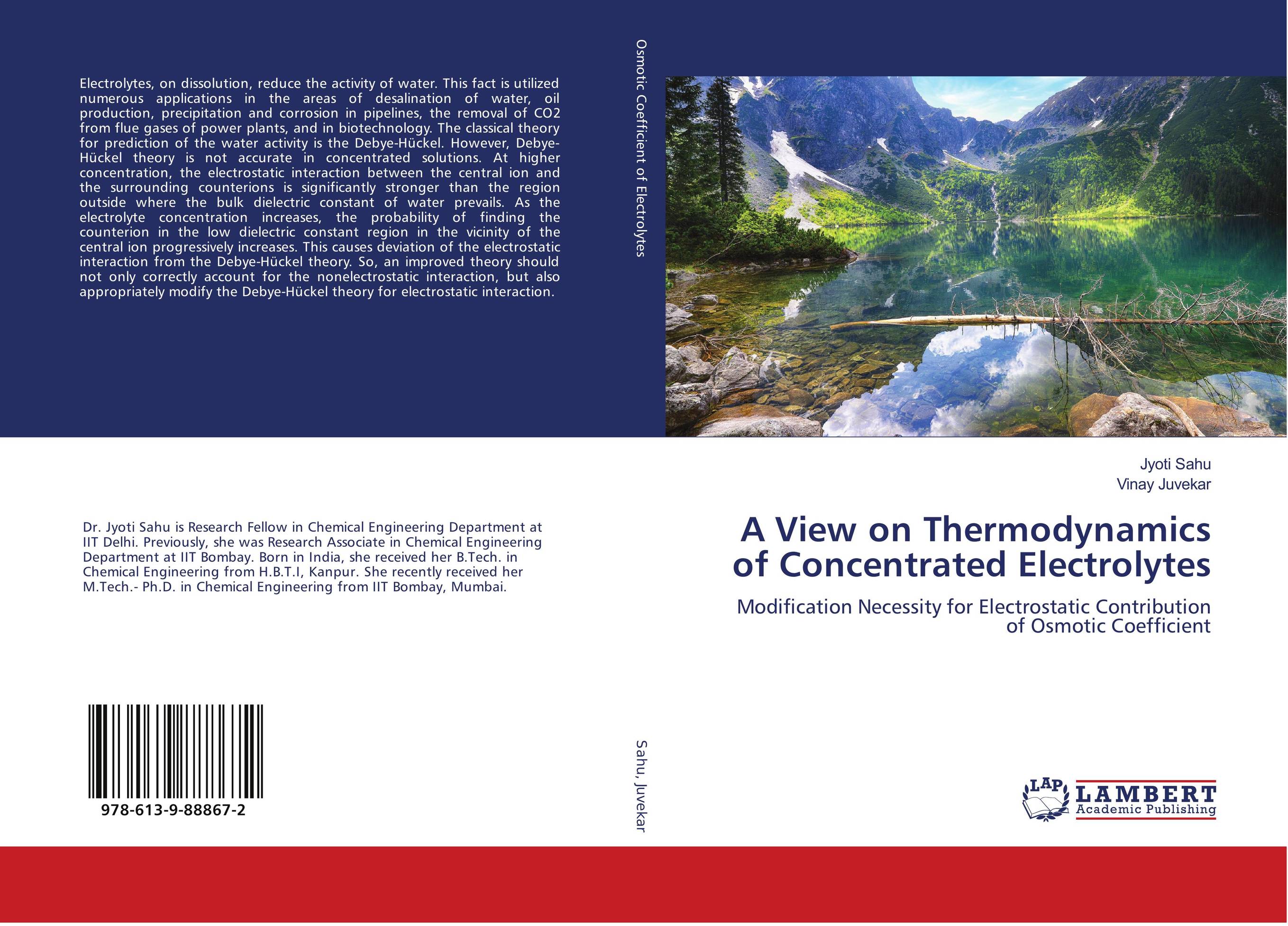| Поиск по каталогу |
|
(строгое соответствие)
|
- Профессиональная
- Научно-популярная
- Художественная
- Публицистика
- Детская
- Искусство
- Хобби, семья, дом
- Спорт
- Путеводители
- Блокноты, тетради, открытки
A View on Thermodynamics of Concentrated Electrolytes. Modification Necessity for Electrostatic Contribution of Osmotic Coefficient

В наличии
| Местонахождение: Алматы | Состояние экземпляра: новый |

Бумажная
версия
версия
Автор: Jyoti Sahu and Vinay Juvekar
ISBN: 9786139888672
Год издания: 2018
Формат книги: 60×90/16 (145×215 мм)
Количество страниц: 180
Издательство: LAP LAMBERT Academic Publishing
Цена: 46153 тг
Положить в корзину
| Способы доставки в город Алматы * комплектация (срок до отгрузки) не более 2 рабочих дней |
| Самовывоз из города Алматы (пункты самовывоза партнёра CDEK) |
| Курьерская доставка CDEK из города Москва |
| Доставка Почтой России из города Москва |
Аннотация: Electrolytes, on dissolution, reduce the activity of water. This fact is utilized numerous applications in the areas of desalination of water, oil production, precipitation and corrosion in pipelines, the removal of CO2 from flue gases of power plants, and in biotechnology. The classical theory for prediction of the water activity is the Debye-H?ckel. However, Debye-H?ckel theory is not accurate in concentrated solutions. At higher concentration, the electrostatic interaction between the central ion and the surrounding counterions is significantly stronger than the region outside where the bulk dielectric constant of water prevails. As the electrolyte concentration increases, the probability of finding the counterion in the low dielectric constant region in the vicinity of the central ion progressively increases. This causes deviation of the electrostatic interaction from the Debye-H?ckel theory. So, an improved theory should not only correctly account for the nonelectrostatic interaction, but also appropriately modify the Debye-H?ckel theory for electrostatic interaction.
Ключевые слова: osmotic coefficient, Electrostatic interaction, Nonelectrostatic interaction, Primary hydration number, Limiting secondary hydration number, Frank model, Total partial molal enthalpies of water, Electrostatic contribution to partial molal enthalpies of water, Nonelectrostatic contribution partial molal enthalpies of water, Calorimetry



